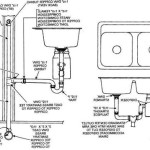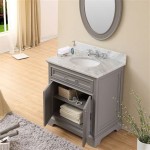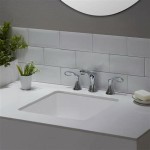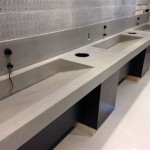Essential Aspects of Replacing Bathroom Floor Rotted In Kitchen Cabinets
Replacing bathroom floor rotted in kitchen cabinets is a crucial task that requires attention to several essential aspects. These aspects include identifying the source of water damage, preventing further damage, removing the rotten subfloor, installing new subflooring, replacing the flooring, and additional considerations.
Identifying the Source of Water Damage
The first step in addressing bathroom floor rotted in kitchen cabinets is to identify the source of water damage. This could be due to leaks in plumbing fixtures, such as toilets, sinks, or bathtubs, or from roof leaks, faulty appliances, or condensation. Addressing the source of water damage is essential to prevent further rotting and damage to the cabinets and other components.
Preventing Further Damage
Once the source of water damage has been identified, it is essential to take steps to prevent further damage. This may involve turning off the water supply, removing wet materials, and setting up fans or dehumidifiers to dry the area. Prompt action can minimize the extent of damage and reduce the risk of mold growth.
Removing the Rotten Subfloor
The next step is to remove the rotten subfloor. This involves carefully cutting away the damaged sections using a reciprocating saw or similar tool. It is important to remove all traces of rot to prevent it from spreading to other areas. Wear appropriate protective gear, including gloves and a dust mask, during this process.
Installing New Subflooring
Once the rotten subfloor has been removed, new subflooring can be installed. Plywood or cement board are commonly used materials for subflooring. Ensure that the new subflooring is properly supported and secured to prevent squeaking or movement later on.
Replacing the Flooring
With the new subflooring in place, the flooring can be replaced. The type of flooring used will depend on personal preference and the overall design of the kitchen and bathroom. Ceramic tiles, vinyl planks, or hardwood flooring are common options.
Additional Considerations
In addition to the main steps outlined above, there are several additional considerations when replacing bathroom floor rotted in kitchen cabinets. These include:
- Checking for mold growth
- Repairing any damaged studs or joists
- Sealing around pipes and fixtures to prevent future leaks li>Hiring a professional for complex repairs or extensive water damage

How To Repair Your Water Damaged Floor Cabana State Of Mind

Rotted Sink Cabinet Floor How To Fix

How To Fix Rotted Cabinet Bottom Floor Much Sink Install House Remodeling Decorating Construction Energy Use Kitchen Bathroom Bedroom Building Rooms City Data Forum

Under Sink Cabinet Repair Our Bright Road

How To Replace Rotted Wood Under A Kitchen Sink Diy Guide Dengarden

How To Replace A Rotten Kitchen Cabinet Floor 8 Simple Steps

How Do I Repair My Water Damaged Sink Cabinet Hometalk
When Repairing The Bottom Of Cabinet Below Kitchen Sink Do I Need To Take Damaged Section Out Or Can Simply Put Plywood On Top It Quora

We Repair Water Damaged Sink Base Cabinet Floor

Repairing A Water Damaged Sink Base Cabinet Floor
Related Posts







